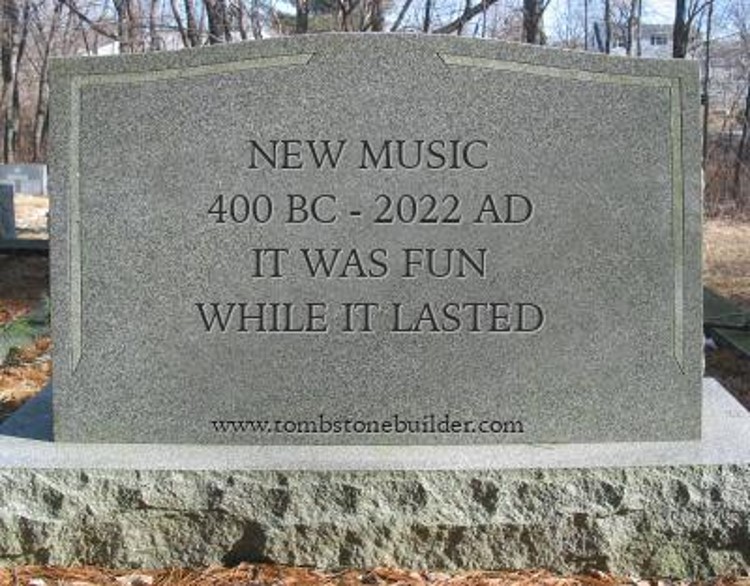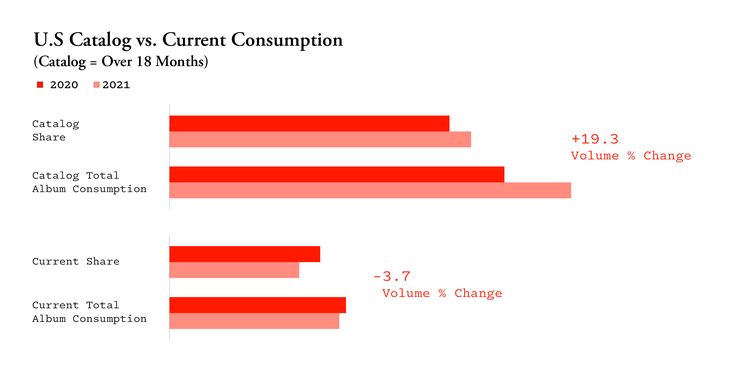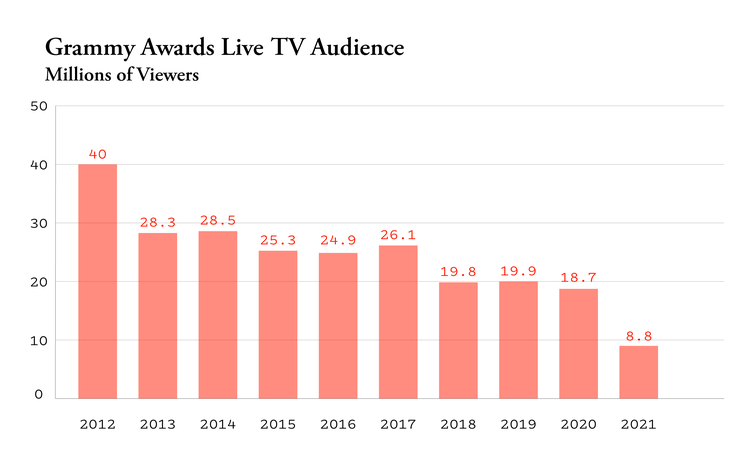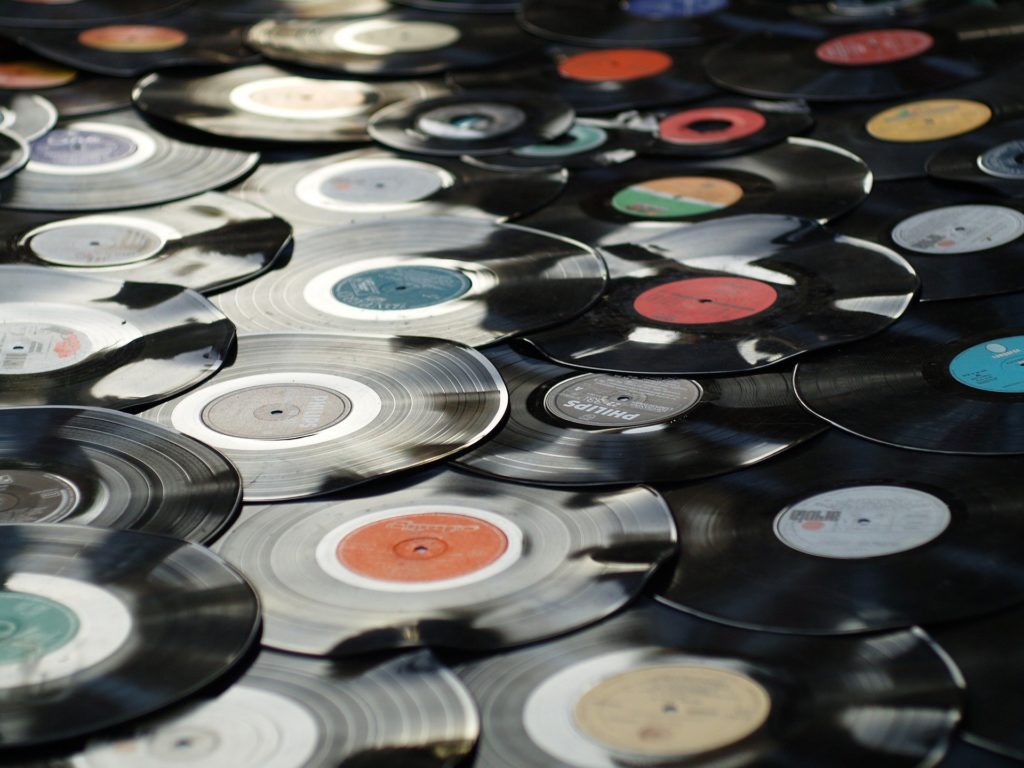
Technically, today’s a holiday. The stock exchanges, banks, and post offices are all closed. So, I wasn’t even sure I had to come up with a “Best of” blog post for today. But because I always go that extra mile for you, here something to read on a late December morning.
And full disclosure: today’s post doesn’t exactly fit the definition of “Best of.” It wasn’t one of the most-read posts of 2022, nor did it generate an inordinate number of comments.
But I liked it, and I think going into a new year, it is still relevant 11 months later. This post was written in late January of this year as I started thinking about the state of radio’s new music formats.
As the all-Christmas music stations spin Mariah Carey’s yuletide hit for the last time today, here’s something to think about regarding the state of broadcast radio in the U.S. and its storied relationship with the record industry. – FJ
January
I always know something’s going on when more than a few people send me a news story “that will make a great blog post.” That was the case last week when Steve Goldstein, Jim Cutler, Brother Bill, and a couple others sent me a devastating essay in The Atlantic by Ted Gioia, author and observer of all things music. The title of his opinion piece ought to be enough to send shivers down your back, whether you’re in the music, radio, or streaming business:
“Is Old Music Killing New Music?”
The headline had a ring of familiarity. A quick search of JacoBLOG revealed I wrote a post with a similar title and an eerily similar ring last January. My pithy title was “Can New Music Compete Against Classic Rock?” and it explored many of the same themes Gioia lists in his lawyer-like takedown of the new music environment, especially the record labels.
He and I both agree the swing toward “old music” (can we just call it “classic?”) hit hyper-speed during COVID as legions of freaked out people retreated to the familiar, cushy confines of nostalgia. But this trend was in play long before we started wearing masks and arguing about the vaccine. Back in 2019 in the UK, three of the country’s top 10 best-selling albums were greatest hits compilations by Queen, Elton John, and Fleetwood Mac – not exactly the latest and greatest music.
It is fascinating to watch our current phase, given my experience with Classic Rock in the early 80’s where the question always was, “But will it last?” Now, respected music critics and pop culture observers are asking the same question about new music and new artists.
In his analysis, Gioia goes right to the data to support his contention that even among “streamies,” the musical diet is laced with gold. The subhead of his opinion piece is like a “spoiler alert” – a tipoff about what’s to come:
“Old songs now represent 70% of the U.S. music market. Even worse: The new-music market is actually shrinking.”
And Gioia uses data to back up his claims, citing MRC research from the past couple years:

And these numbers aren’t just based on Baby Boomers listening to their old King Crimson and Steely Dan records. A devastating stat in The Atlantic piece underscores the fact that even streaming has turned old.
Very old.
Gioia notes “the 200 most popular new tracks now regularly account for less than 5 percent of total streams.” Three years ago, that number was twice as high. In aggregate, there’s more streaming going of Grand Funk-era songs than Arianna Grande music.
For breakout new songs, it’s a puny performance, and it’s headed in the wrong direction. To prove his point the issue goes beyond the music and permeates the culture, Gioia cites the crash of Grammy Award ratings as proof positive most consumers just don’t give a rat’s patootiee about new music. Now in general, awards shows have almost all been down-trending, hitting new lows during these past two COVID seasons. Still, these numbers were sinking pre-pandemic, hitting an all-time low last year.

Gioia makes the assertion that never before in history has new music had such a miniscule impact on our cultural fabric.
In the meantime, Classic Rock is bringing home the bacon…and the eggs, the hash browns, and the entire menu. The gold rush to buy artist catalogs is full steam ahead, including Mt. Rushmore icons such as Springsteen, Dylan, Bowie, and Steve Nicks. Expect more of these “sales” in the coming months and years as classic artists cash in on their catalogues.
It is also noteworthy the best-selling physical music format today is ironically vinyl. Now keep in mind that most people aren’t actually purchasing music anymore – CDs, cassettes, mp3s, or records. But of those who just have to own it , vinyl is back in style, underscoring the trend that what’s old is cool.
records. But of those who just have to own it , vinyl is back in style, underscoring the trend that what’s old is cool.
And Goia concludes by claiming the future for new music is not a bright one. that’s because record execs have lost faith in discovering new artists, styles, and genres. He points to label investment gathering momentum in the catalogue silo, while it continues to head backwards in the new music category.
I get nervous when analysts in any field – movies, finance, health and fitness, and yes, music – start making sweeping conclusions based mostly on the last two years. The debate over the workplace falls into this zone. We simply are not going to know where we’ll be doing our jobs a year or two from now. We can’t predict how our lives will evolve on the other side of the pandemic.
Assumptions about where music is or isn’t going are difficult and dangerous when based on 2020-21 trends for all these reasons. COVID has broken our compasses, making forecasting precarious at best.
The pandemic is an anomaly. But much of the data surrounding new music’s trajectory were already trending down before we were arguing about masks. I liken it to online shopping – in reverse. During the last five years, more and more of us were doing our shopping online, thanks in no small part to the explosion of Amazon Prime. COVID accelerated that trend, forcing brick-and-mortar stores like Macy’s, Walmart, Nordstrom, and even local retailers to establish and or bulk up their e-commerce efforts.
Interestingly, Gioia finishes his piece with a ray of hope. That’s because he’s certain – and I share this belief – that “the next big thing won’t sound like the last big thing.” That’s my quote, and I believe it stands the test of music discovery time. When we expect the next wave of music to sound like the current fare, it’s easy to miss what’s next.
Elvis didn’t sound like Sinatra. The Beatles didn’t sound like Elvis. The Sugarhill Gang didn’t sound like the Beatles. And Nirvana didn’t sound like the Sugarhill Gang.
Simplistic? Perhaps, but most corporate music mavens never saw these changes coming. We laugh now at the record executives who missed the next hot trend or failed to sign a great band. But that’s the whole point of not knowing where we’re going…until we already get there.
Gioia’s conclusion about how this story might end:
“…not with the marginalization of new music, but with something radical emerging from an unexpected place.”
When does this happen? In this environment, how can it happen? Will it even happen? Good questions all. None of us knows how this saga will play out. Is the end or is it just the beginning?
Still, you have to wonder whether the conditions that enabled new music discovery – and let’s give radio its due credit here – have![]() changed, perhaps permanently making it difficult to expose new music on a mass basis.
changed, perhaps permanently making it difficult to expose new music on a mass basis.
That’s one way of looking at it. But I have a sense of confidence the new music conundrum will, in fact, sort itself out. There will be great new bands, artists, songs, and genres that will surprise, delight, and remind us we’re on a cultural roller coaster that while far from flat, has its shares of thrills…and maybe even spills.
And you’re hearing this from the Classic Rock guy.
Tomorrow, a second part of this blog post will venture out and predict how this might happen, and whose voices will be heard.
You can read Ted Gioia’s piece in The Atlantic here.
- I Read The (Local) News Today, Oh Boy! - April 15, 2025
- Radio, Now What? - April 14, 2025
- The Hazards Of Duke - April 11, 2025





Maybe when music is created by people playing actual instruments instead of just looping bits of old tracks, we’ll see greater interest in new music again. So many new “artists” are adept at slicing and dicing tracks, overdubbing, and creating “studio magic” to recycle existing samples. It’s slick, it’s cheap, and it’s boring. I’d wager that the new music that’s selling best is still created by people who can actually sing without auto-tune and play instruments in a way the evokes an emotional response. And they don’t whine so much.
Thanks for the comment, Brian. Back in the day there was certainly more authenticity. But the overall environment in how music is exposed has changes a great deal as well.
Some words come to mind. . “Taylor Swift”, or “Dua Lipa” or “Lizzo” or Ed Sheeran or “The Weeknd”. Pop music has traditionally been catchy, clever lyrics. These artists still do that. Some of today’s artists however have turned to lyrics that don’t meet the “mass appeal” criteria. That might translate to fewer customers, fewer downloads. Many artists make their own music to “prove a point” -which is exactly what Bob Dylan and John Lennon did in their heyday. They also dabbled in “mass appeal” music which kept their names in the forefront. In 2022 there’s still a method to creating and marketing a product. Those methods still continue to be successful. There’s just fewer successes…and more “prove a point” distractions. That’s how I see it. Thanks for reminding us, Fred.
Then, there’s today’s All Access post “KLIF shifts focus on 90’s-2000’s hits”. Of corse with a .8 share, they’ve got nothing to lose -and it might differentiate them from their competition. Indeed – it’s AC for the 2020’s.
Glad you enjoyed the “rerun,” Dave. It is difficult for “hits radio” in any genre to thrive when there are “fewer successes” in a world that has become long tail.
As a new music artist I can confirm there are many authentic artists out there playing traditional instruments and with good vocals. There are also a few internet radio stations willing to set aside air time for such artists. RS Radio, Wigwam Radio and West Norfolk Radio are great examples of stations that give good space to these artists. On the flip side however I have been told many times by small radio stations that they do not support unsigned artists and here is the problem.
Too many stations fall back on the safe option of classical music that has already made a mark.
There is more risk and no money in playing unsigned artists yet the stations I know that do make time have access to some incredible talent. I recently presented a 2 hour new music show that has been distributed to a small number of stations willing to take a risk, the show was filled with excellent talent and not a looper or auto tune in sight.
We simply need more platforms for new music and more venues that respect new music on equal terms with cover artists
Thanks for the perspective, Kieran. I believe that in the U.S., public radio stations that feature music, by and large, do a good job of exposing more diverse music. I often wonder, however, why more stations don’t make it a point of their missions to seek out and play music from local artists in their communities.